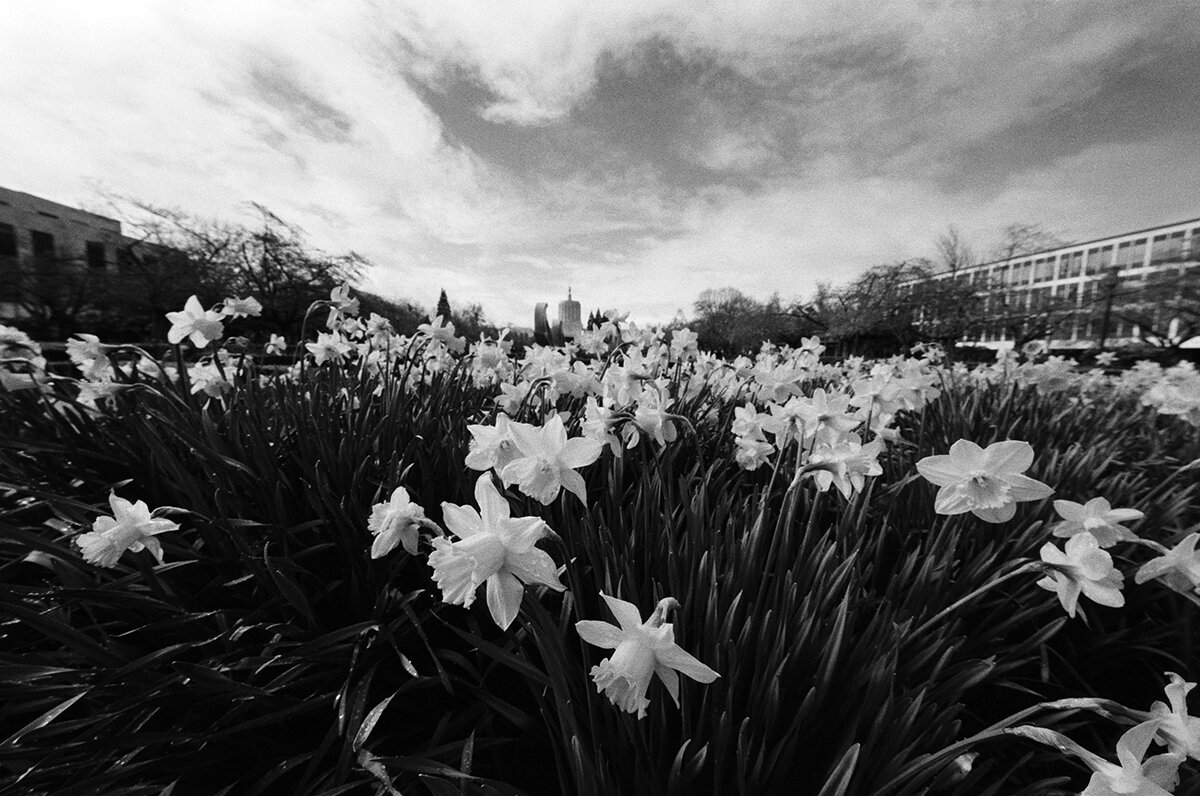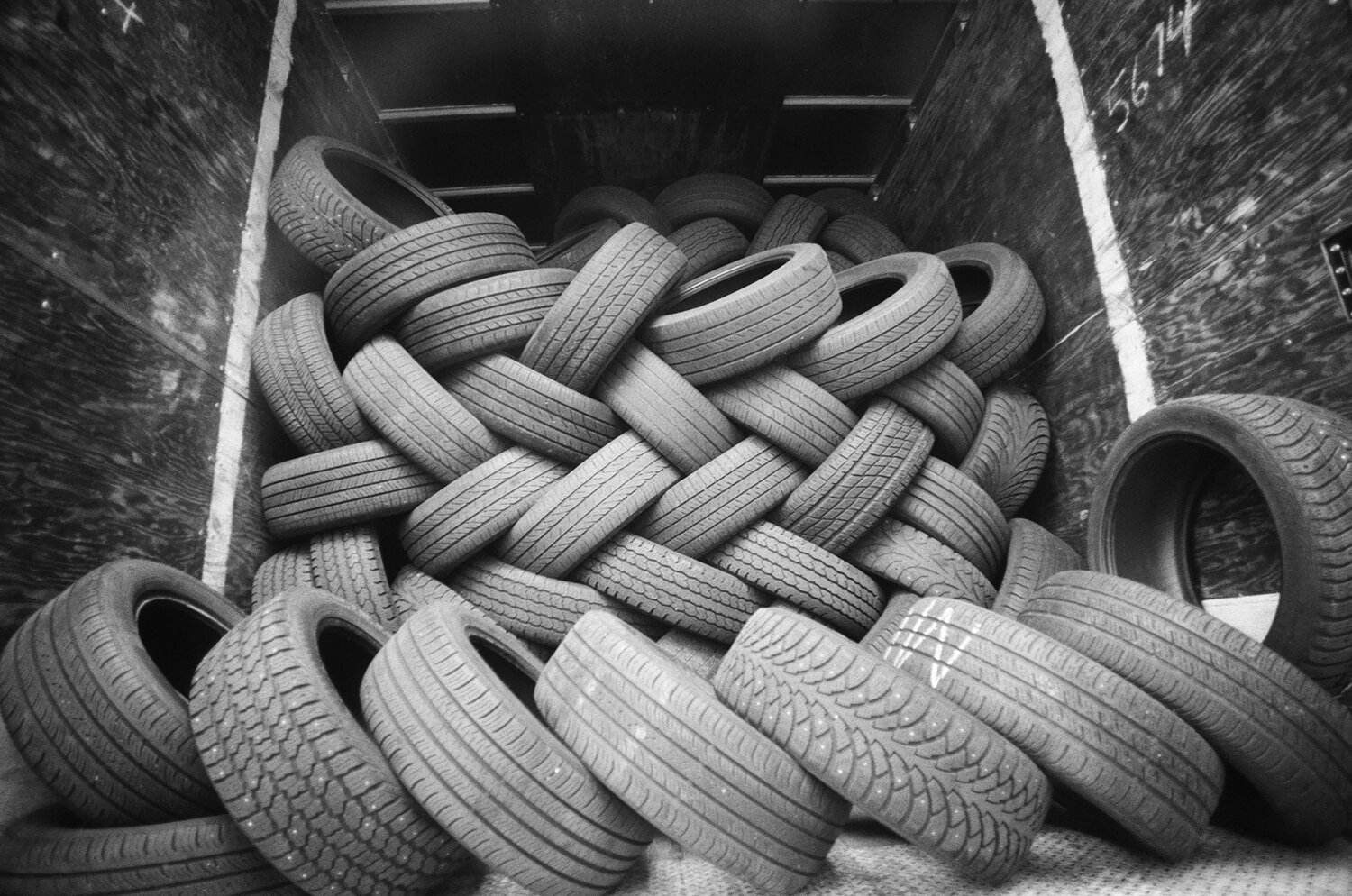Film Friday - May 9th, 2025. Fomapan 200 Creative Film Review
With today’s Film Friday we are completing our triumvirate of reviews covering Foma’s three most popular films. As you might expect of a middle sibling, Fomapan 200 shares quite a bit in common with its ISO 100 and 400 counterparts. We definitely suggest adding our reviews of Fomapan 100 and Fomapan 400 to your reading list as all three taken together will really help paint a much more cohesive picture of this film, and the rest of the Fomapan family. But in case you don’t make it over to those reviews permit us a mildly redundant overview of the Fomapan films in general to get you started here. Don’t worry, we’ll keep this short.
Perhaps one of the first things to know about the Fomapan films is that they are produced by one of the few major film manufacturers not named Kodak, Fuji or Ilford. This is a very short list. Foma Bohemia (located in Czech Republic) is right up there with Ferrania in Italy, Agfa Gavaert in Belgium and Shanghai or Lucky in China as the only manufacturers outside the big three that are more or less fully making their own films. As a company, Foma Bohemia has been in existence since 1921, just three years after Czechoslovakia was founded in 1918. That portion of Czechoslovakia became the Czech Republic in 1993 where Foma Bohemia now resides. All this is to say that even if you haven’t heard much about Foma before now, they’ve definitely been in the business of photosensitive products for quite some time. The Fomapan trio of films has been on the market for about 20 of those years, so while not an especially old group of films nor is it an especially new one either.
Fomapan 200 Creative shot in a Canon EOS 3.
Fomapan 200 is an interesting film and we are going to look at it from two different perspectives: what it is like relative to Fomapan 100 and 400 films, as well as how the film should be thought of on its own. Let’s start with the latter.
The odd thing about Fomapan 200 is that it tries, and seems to succeed to a degree, at being a film that looks both old and new - classic and modern - at the same time. Technical documentation from Foma describes the film’s emulsion as being composed of a tabular grain structure. This would make it similar to Ilford Delta, Fuji Acros and Kodak TMax films in terms of the appearance and pattern of its grain structure. Those films are known for super smooth and fine grain with high degrees of sharpness and resolution, giving them a more “modern” look. Though Fomapan 200 boasts this same tabular grain, unlike Delta, TMax or Acros it has a look akin to classic cubic grain emulsions. Beyond simply its “look”, Fomapan 200’s image is fairly coarse and grainy. It has an RMS rating (a scientific measurement used to communicate how grainy a film is) of 14. Compare this to Kodak TMAX 400, a higher speed tabular grain film, which has an RMS of 10 and Fomapan 200 is a fair bit grainier than you would normally expect of a tabular grain film. Now, whenever we talk about film grain we often feel like we need to a bit of a disclaimer to at least remind you that film grain is a subjective quality. Some photographers love it, others avoid it like the plague. Some photographers like the grain of one film but not the grain of another. So don’t equate our talk of Fomapan 200’s higher levels of visible grain as a negative (no pun intended) quality of the film. Rather it is just a piece of info to keep in mind when considering loading a roll of Fomapan 200 into a camera.
You should definitely expect some grain in your Fomapan 200 photos, whether you think that is a good thing or not is entirely up to you. Image made with a Canon EOS 3.
Generally after grain our thoughts move to contrast, tonality and latitude. Here again Fomapan seems to avoid tying itself too closely to modern tabular grain films. The film has fairly average contrast to it, but your mileage here can vary a lot depending on how you expose the film and develop it. When shot in even lighting, Fomapan 200 has a very soft and even look to its contrast, with nice tonality through its range. But the film is not very forgiving of underexposure, especially if rated at its box speed of ISO 200. A lot of Fomapan 200 users recommend rating this film at ISO 160 or 100 for better shadow detail. We have always shot it right at ISO 200 ourselves and it has worked perfectly fine for us, though if you follow our lead on this we will agree that rated at 200 its shadows can drop off very quickly. These deep, underexposed shadows can give Fomapan 200 the appearance of more contrast and drama. So if you want something that looks a bit more like old school Tri-X, then rate your Fomapan at 200 and go for it. If you want a bit softer contrast and better tonality, especially in your shadows, then overexpose your Fomapan 200 by one half to one full stop.
We have read that Fomapan 200 can handle pulling and pushing ranging from ISO 100 up to ISO 800. We cannot speak to this other than to say that based on our experience we would be inclined to believe this film would handle ISO 100 just fine even if you didn’t pull-process it but we’d be a bit skeptical about taking it up to ISO 400 or 800. Be prepared for some deep, crunchy shadows.
Fomapan 200 can certainly be used at box speed - we do all the time - but be prepared for shadow detail to fall off very quickly giving this film a more dramatic or contrasty look. Image made with a Canon EOS 3.
Meanwhile, use Fomapan 200 in even lighting and it has a wonderfully soft contrast and nicely tonal look to it. Image made with a Pentax 67.
Two final qualities to drop into the mix before we zoom out and approach this film from a different angle are its spectral sensitivity and its reciprocity failure. In short, spectral sensitivity is a measurement of how sensitive a film is to the various parts of the spectrum of light ranging from UV to IR, focused mainly on the visible spectrum between those two. Fomapan 200 is a panchromatic film, so it is sensitive to the entire range of visible light, as opposed to say an orthochromatic film which is only sensitive to the blue/green end. Read our Film Friday review of Ilford Ortho Plus if you want to learn a bit more about orthochromatic films. Most panchromatic films have relatively even sensitivity across the visible spectrum, dropping off at the far edge of the red end. Fomapan 200 differs from these films in two ways. First off, glancing at its spectral sensitivity chart shows a film that climbs in sensitivity as you get into the red end of the spectrum. Rather than being equally sensitive across the spectrum of visible light, Fomapan 200 is more sensitive to red light than it is to blue or green light. This means that red objects will naturally overexpose slightly when photographed with this film. Caucasian skin tones will render a bit lighter, as will yellow and red foliage, as examples. In addition to this heightened sensitivity, Fomapan 200 also has extended red sensitivity, extending into the near infrared range out to about 720nm. This isn’t really strong enough to use this film to make infrared images but it does reinforce the film’s tendency to lighten red objects, and any object that naturally reflects lots of IR light will also tend to lighten up.
And then there is reciprocity. This describes how a film performs when very slow shutter speeds are required due to a lack of light. Fomapan 200 does ok down to about 1/2 second exposure lengths but after that the need for additional exposure compensation kicks in pretty quickly. According to Foma’s own datasheet when doing 1 second exposures with Fomapan 200 it is advised you open your aperture an additional 1.5 stops. Put another way, you could also recalculate your shutter speed from 1 second to 3 seconds. And if you are doing long exposure nighttime work requiring shutter speeds longer than 10 seconds be prepared to really kick in the compensation. At 10 second exposures it is recommended giving the film an extra three stops of exposure. This means that Fomapan 200 might either be a film you want to avoid for long exposure work due to the rapidly increasing need for additional exposure, or a film you want to use as it may be able to naturally stretch out longer exposures in situations where other films would be too fast.
If you take Fomapan 200 out at night be ready to give it lots of extra exposure. This was about a 10 second exposure with no extra compensation (we had not yet looked into Fomapan 200’s reciprocity rates). Image made with a Canon EOS 3.
Alright, we started this review off by presenting Fomapan 200 as part of a trio of films and that seems like a good way of closing this review out as well. So let’s take a quick look at how Fomapan 200 compares to its other two family members.
Fomapan 200 more or less has a pretty consistent look compared to Fomapan 100 and 400. If you were to shoot all three films independently you wouldn’t notice any glaring differences. Nonetheless there are ways this film contrasts, as well as compares to these films. One interesting aspect to note is that Fomapan 200 has practically the same amount of graininess as Fomapan 100, despite being a full stop faster. That latter film has an RMS of 13.5 compared to Fomapan 200’s RMS of 14. And in case you are curious, Fomapan 400 has an RMS of 17, so it is noticeably grainier for its extra stop of speed over the 200. Maybe this is because we have read that Fomapan 100 and 400 are cubic grain emulsions but Fomapan 200 is a tabular grain emulsion. If true, this would allow Fomapan 200 to be a fair bit faster than its ISO 100 sibling but without significantly increased graininess. Also, if this is indeed true then it would explain that even though Fomapan 200 does have a look consistent with the other two films, it also manages to appear a bit cleaner and crisper than these films as well. It gets back to what we said earlier about Fomapan 200 being a film that tries to look old and new at the same time. Fomapan 100 and 400 are decidedly classic in their appearance. Fomapan 200 has this to a degree, but it also has a crispness that those other films don’t quite have.
Fomapan 200 can somehow manage to look both classic and modern at times, making it both comparable but also different from Fomapan 100 and 400. Image made with a Canon EOS 3.
All the Fomapan films also struggle with reciprocity failure. This is definitely something they share with one another. But it is worth pointing out that Fomapan 200 has the greatest need for extra compensation. Again, take this how you will.
All three of the Fomapan films also share that unique spectral sensitivity chart, with heightened and extended red sensitivity. Fomapan 100 and 200 have identical charts in this regard and thus they can be expected to render light into grey tones in a more or less identical fashion. Fomapan 400 has even more extended sensitivity into the near IR end of the spectrum, going farther than either of the slower films. So in terms of the translation of colors into grey tones, Fomapan 400 will do a slightly different job.
And one last element to throw out there that all three films share is that they use a triacetate base for 35mm but a polyester base in 120 and sheet film. Polyester bases tend to be thinner and clearer. This can sometimes help with additional clarity when printing or scanning. Polyester bases can also sometimes diffuse light around highlights giving bright objects a bit of a glow. All this is to say that you will always see a difference in appearance when using a film in either 35mm or 120 formats just because the negatives are different sizes, but all three Fomapan films with their different bases may look increasingly different when comparing 35mm against medium format.
Fomapan 200 really should be tested in both 35mm and 120 as each format is a fairly different experience with this film. Image made with a Rolleiflex TLR.
Update October 2025: I was contacted by a customer who has spent some time with Fomapan 200 in 35mm and 120. They had been experiencing issues with the 120 film in the form of black marks in the final images. After much trial and error they deduced that Fomapan 200 in 120 has a soft emulsion that is easily damaged. If the film is put through certain cameras that lack rollers for easing film transport, have sharp bends the film winds across, rough surfaces inside the camera or any combination of those, you can see these small marks in your images. We are attaching a sample image below to show you. Big thanks to Baron Schwarz for sharing this image and their findings with Fomapan 200 120 film.
In 120 Fomapan 200’s emulsion can be easily damaged as it winds through the camera. If you encounter similar marks in your Fomapan images, try the film in a different camera with smoother/easier film transport.
And that pretty much concludes our rundown of Fomapan 200 Creative. It is an interesting film with its own quirks, qualities and charms. Do we think you should try a roll? Of course we do. We think pretty much every film out there on the market these days is worth trying. Each film has its own flavor, and not every flavor will fit the taste of every photographer, but how will you ever know if you don’t at least give it a try.
And can you believe that we made it this far into a review of Fomapan 200 without mentioning that one of its best selling points is its price? That’s right, it is a pretty inexpensive film skipping along in an increasingly expensive world of film photography.
We have almost every film stock available on the market. Check it out!
If you need an excellent lab for meticulous film developing, topnotch optical prints, traditional darkroom printing and superb film scanning, we’re your lab!
Also, sign up for our weekly newsletter The Loupe and keep your eyes peeled on our social media feeds every Friday when we feature a different film and also offer it at a one day discount of 15% off!
While we typically prefer Fomapan 100 for our pinhole cameras due to its slower speed, Fomapan 200 ain’t a bad pinhole film itself. Also note the slight speckling in the sky caused by mottling from the backing paper. This can be an issue as batches of medium format Fomapan film age. Image made with a Reality So Subtle 6x6 camera.























